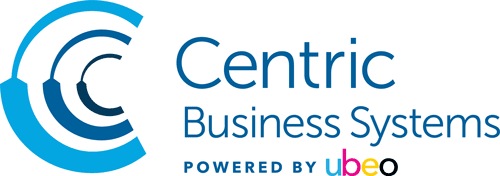Do More than Copy and Print with Your Digital Copier or MFD
More than 75% of organizations report they still rely on printing to run their business operations, and they depend upon digital copiers and multifunction devices (MFDs) to do this printing throughout the day. However, as firms accelerate their digital transformation projects, moving business processes from paper-based manual workflows to digital, data-driven workflows, many have discovered the power and value of the scanning function these devices deliver. The amount of information (many of it on paper documents) coming into an organization is expected to grow 4.5 times over the next two years. Using the scan function and doing more than just copying and printing on your digital copier or MFD is a key part of effectively and efficiently managing this information growth.
Here are five ways scanning on an MFD can be used to intelligently capture information from hardcopy documents to help get data to employees and into business workflows faster and more accurately. These steps can reduce costly errors, improve process turnaround times, and even add to the bottom line.
Email files to a single address or multiple addresses directly from the MFD.
When a hardcopy document needs to be emailed to another party it can be a hassle to scan it to your PC, create an email message, then search for and attach the correct file. Instead, use the MFD to scan the document and immediately send it via email. You can select the recipient email(s) from the MFD’s address book (or available corporate network address books) or enter the email address(es) directly on the MFD’s operator panel (most MFDs today have a keyboard function). Additionally, if authentication is set up, the “From” portion of the email will be the sender’s (the authenticated user) email address with the email showing in the sender’s “Sent” file.
Make sure that scanned files get sent to the right place.
You can scan hardcopy documents and send those files right from the MFD to local or network folders, network repositories, and collaboration applications such as SharePoint. They can also go directly to cloud services like Box, Dropbox, Google Drive and others. With some MFDs, QR codes embedded in the document can be used to automatically route the scan to the right location(s). Eliminating the need for multiple steps such as scanning to a PC and uploading the files to the appropriate repositories means fewer errors and higher employee productivity.
Use the optical character recognition (OCR) software of the MFD to convert hardcopy documents to searchable, even editable, formats.
By scanning and converting a hardcopy document into a searchable PDF it can make it much easier to find the content and context of the document when searching for it later. Converting the scanned hardcopy document into an editable format like Word, Excel, or PowerPoint provides additional versatility, particularly in regard to shared collaboration.
Add file names, indexing data and other metadata to the scanned file directly from the MFD keyboard.
Rather than creating and sending files with complex and confusing names such as “SCN2021010112:04.18.pdf,” a user can name the file in a more descriptive and useful way that provides for better organization or that corresponds to the firm’s folder and file naming system. Adding indexing tags and other metadata right at the MFD also helps in file distribution and organization, making it easier for employees to find important documents and information and reducing wasted search time and data re-creation costs.
Integrate MFD scanning into automated workflow steps of business processes.
Using APIs (Application Programming Interface), or through pre-configured automated steps, an MFD’s scan functions can be integrated with various types of software like accounts payable, accounts receivable, HR management, or industry-specific applications. Setting up a one-touch “Accounts Payable” button on the MFD’s operator panel can let users scan, OCR, add required metadata and send the file to the organization’s workflow application or ERP system for the necessary review, approval, and payment steps. A legal firm can set up an integration with a court’s e-filing system that has the MFD scan a document, convert it into the appropriate file format, split the file into the approved file sizes, and even apply Bates stamping to the scan. Both examples increase the accuracy of the data going into the business process, improve process turnaround time, reduce employee time and increase the organization’s overall productivity.
These are just a few ways scanning with an MFD can help organizations. With advanced solutions like Ricoh’s Smart Integration Advanced Workflows, an MFD can be set up to combine many of the steps above to automatically classify document types, extract data that will auto-populate metadata fields, and route the scan to the appropriate destination or multiple destinations.
Whether you are just looking to manage and control your scanned documents, leverage your MFD’s scan functions to address your firm’s digital transformation, or move to more advanced scanning solutions, Centric Business Systems can help. Contact us at www.centricbiz.com for more information or to schedule an appointment with one of our solutions specialists to review your current situation and recommend solutions that help you attain the goals you want to achieve.
Tags: Multifunctional Devices
